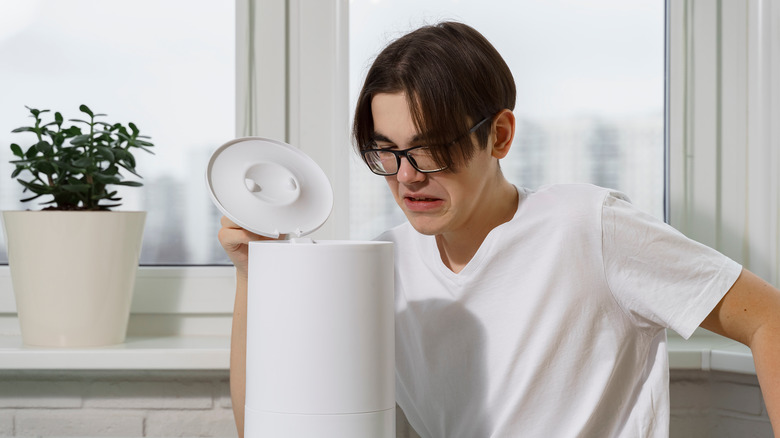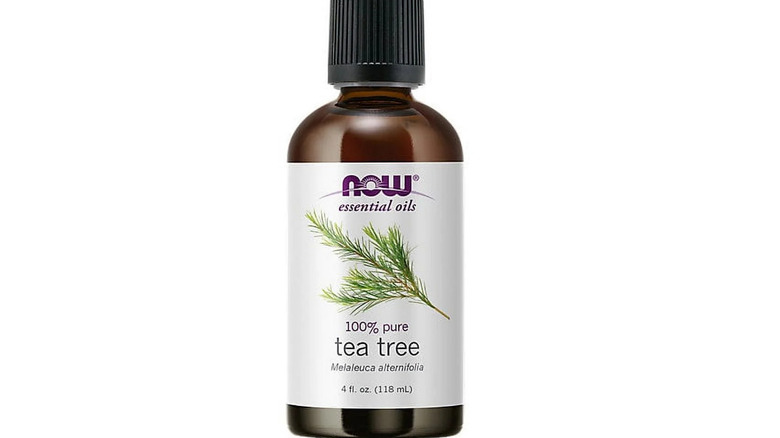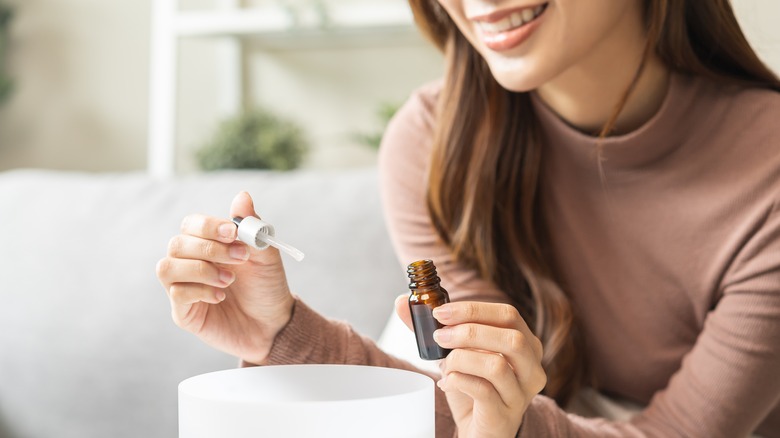Add This Secret Weapon To Your Humidifier To Prevent Unwanted Mold Growth
Humidifiers play a pivotal role in creating a comfortable indoor environment by adding moisture to dry air, preventing issues like dry skin, irritated nasal passages, and even static electricity. While these devices offer numerous benefits, their warm and moist interiors can inadvertently become a breeding ground for mold, presenting a dual challenge for health and appliance maintenance. This is where tea tree oil comes in, because when it comes to combating mold, this essential oil you can put in your humidifier is a natural and effective solution known for its antifungal and antibacterial properties.
But how does mold form in the first place? Mold grows where there is moisture and moderate temperatures. The humidifier's function involves drawing water from a reservoir and converting it into a fine mist that's released into the air. However, this process can lead to the accumulation of moisture within the device, creating an environment conducive to mold growth. Mold spores are not only unsightly but can also trigger allergies and respiratory problems when released into the air. Good thing you can rely on the potency of tea tree oil to discourage a moldy invasion.
Using tea tree oil to prevent mold growth
To utilize tea tree oil's mold-fighting properties, it's recommended that you add up to five drops of the oil to your cool-mist humidifier and then fill the reservoir with distilled water, letting the machine run for around a half hour. Warm-mist humidifiers can continue running with no time limit. After the time is up, rinse out the tank and let it dry. Another option is to use the cotton center of your filter cartridge as the tea tree oil delivery medium. Moisten the cotton center with water before adding ten drops of tea tree oil. Replace the filter cartridge and use the humidifier according to your desired settings. Keep in mind that using oils in non-compatible devices could damage internal components or affect performance.
The efficacy of tea tree oil in preventing mold growth is grounded in scientific research, as exemplified by a 2021 study published in the International Journal of Molecular Sciences as well as a 2018 study in the American Journal of Microbiological Research. Both studies explored tea tree oil's antifungal and antibacterial properties. Adding tea tree oil to your humidifier may act as a protective barrier, inhibiting mold growth and preventing the formation of biofilms that could compromise the appliance's functionality.
Humidifier maintenance tips
Now, let's look at additional maintenance measures to ensure your humidifier remains a reliable device for maintaining indoor comfort and air quality. Beyond using tea tree oil to inhibit mold growth in your humidifier, regular thorough cleaning is crucial. Make sure you empty and clean the water tank daily, using a mild detergent and a brush to scrub away any residue. Replace water in the tank daily to prevent stagnation. Additionally, use distilled water to minimize mineral deposits and reduce the risk of bacterial growth.
Investing in a humidifier with antimicrobial features is another wise choice. These models inhibit the growth of mold and bacteria, providing an extra layer of protection. Finally, always follow the device manufacturer's cleaning instructions to ensure the longevity and efficiency of your humidifier. By incorporating tea tree oil and adopting proper maintenance practices, you can enjoy the benefits of a humidifier without the worry of mold-related issues.
Before using this hack, it is important to keep in mind those living in your household. According to the American College of Veterinary Pharmacists, 100% natural tea tree oil, even in the smallest amount, is highly toxic for dogs and cats and may still prove toxic in concentrated amounts. Please consult your pet's veterinarian before adding tea tree oil to anything in your home.


